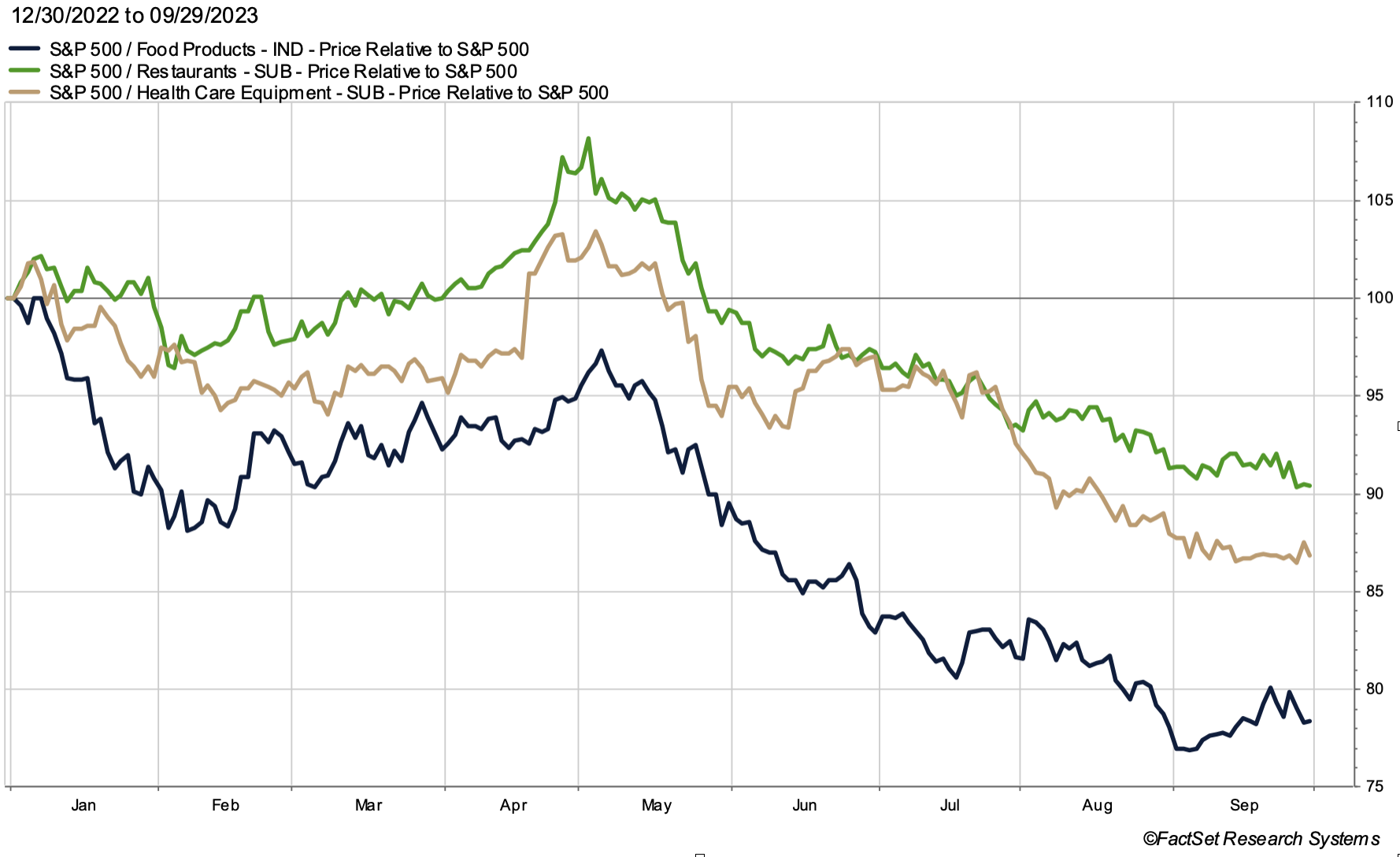Much as artificial intelligence (AI) dominated headlines and investor mindshare earlier in the year, in the third quarter, the market became fixated on the impacts of GLP-1 drugs. These drugs (GLP is short for glucagon-like peptide) include Novo Nordisk's Ozempic and Wegovy, Eli Lilly's Mounjaro and several others in development. We wrote about the market’s reaction to rising GLP-1 drug demand in our 3Q 2023 commentary. An excerpt of the commentary follows.
Originally developed to treat diabetes, GLP-1 drugs are increasingly being used to treat obesity as patients prescribed the medications have shown substantial weight loss. Additionally, recent results have indicated these drugs substantially curb cravings not only for food but also for things like soft drinks, alcohol and tobacco.
Impacts of Obesity Far-Reaching
Given the high level of obesity in the United States, these drugs could obviously have a significant impact on food consumption. Additionally, it could be extrapolated that demand for orthopedic, heart, and other medical procedures impacted by being overweight could see reduced demand. Given this, as can be seen in the chart below, food-related stocks, restaurants, and medical device stocks have sold off en masse as these drugs and their effects dominated headlines during the summer months (peak Google search trends for the term "Ozempic" were seen in June).
GLP-1 Hype Sparks a Distaste for Food, Restaurant, and Health Care Stocks

Weighing the Pros and Cons
Much like the AI frenzy during the spring, where seemingly everything AI-related was bid up, the market took a similar (but directionally opposite) approach with the food and medical device stocks - shooting first and asking questions later. For bottom-up stock pickers like us, this creates opportunities to sift through the rubble and find oversold names. There are, for example, offsetting potential positives for many of these companies which need to be considered. For example, the knee-jerk reaction is to believe a reduced overweight population will result in less need for knee and hip surgeries. But, this could be offset by having a larger percentage of the population eligible for such surgeries if their BMI (body mass index) comes in line with guidelines. Additionally, a second derivative of losing weight could be increased exercise and other physical activity, potentially resulting in injury.
It is very early days, and hard to know the ultimate impact from these drugs. However, on Abbott Laboratories’ recent earnings call, CEO Rob Ford stated that despite all of the negativity surrounding their diabetes-related products, including continuous glucose monitors, the data so far has actually shown an increased usage of their Libre sensors from diabetics who are undergoing GLP-1 treatments. This is counter to the doom and gloom implied by recent ABT share performance.
When it comes to the impact on food-related companies, Morgan Stanley estimates that overall calorie consumption could decline in the U.S. by 1-2% by 2035. This seems manageable, especially in the context of things that happen in the ordinary course of a business cycle such as impacts from increased competition, or pricing changes for example. And all calories are not created equal. Companies which heavily skew to sugary snacks or “junk” food will almost certainly be more adversely impacted, as will fast-food restaurants.
Additionally, data suggests that consumers of these drugs are experiencing a substantial loss of muscle mass, with over 30% of weight loss being attributed to reduced muscle mass in some studies. That could dissuade some from long-term use of these drugs or from taking them altogether. Interestingly, on recent earnings calls, several companies indicated they are in the process of developing products specifically targeted to those who have lost muscle mass due to the drugs, hoping to offset potential lost revenue from the GLP-1 effect.
Investment Implications
In terms of stocks impacted by GLP-1 drugs, given the near universal selloff of food-related and medical-device companies, there are certain to be opportunities. On the margin, the GLP-1 related selloff has made the consumer staples sector more attractive, but we have not made material changes as of yet. Should we deem it appropriate to be more defensively positioned, or if these stocks continue their declines, it is likely we would be more constructive on the sector. In certain cases, the selloff in medical device companies appears overdone. We continue to look for opportunities to increase exposure here. Finally, we are likely to look to add to high-quality restaurant names which are now trading at more attractive multiples following the recent selloff.
To access our 3Q 2023 commentary in its entirety, click here.

